Are you considering welcoming a Dutch Shepherd into your heart and home? These beautiful and energetic dogs require a lot of exercise and training but can make a great companion for the right family willing to put in the work. Keep reading to learn about Dutch Shepherd growth, milestones, and training tips!
The Basics: Dutch Shepherds 101
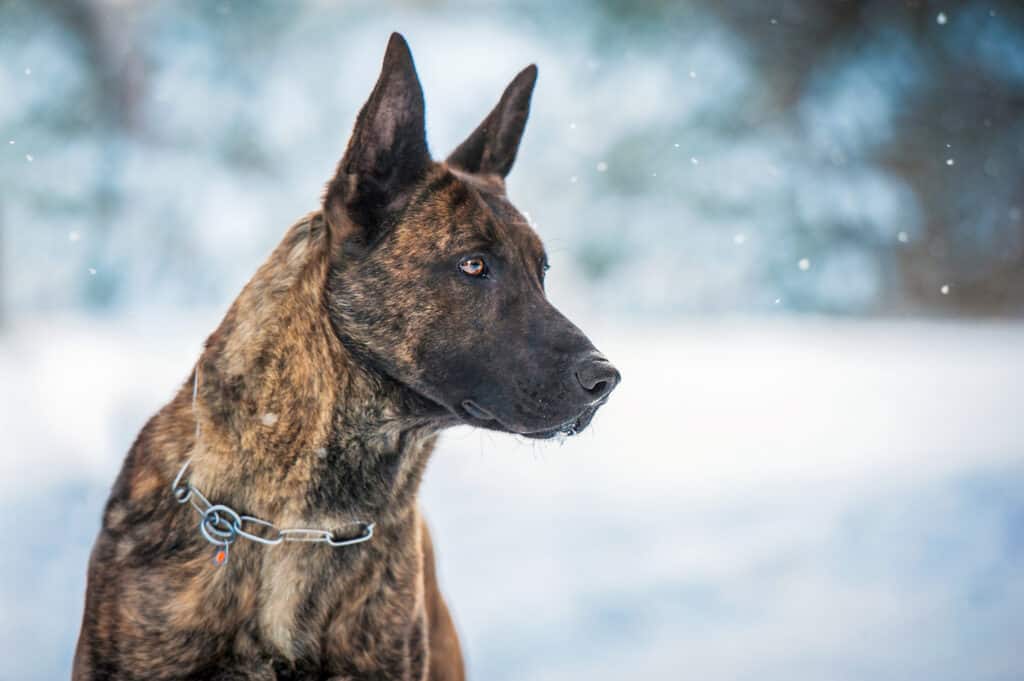
Dutch Shepherds are impressively intelligent, love a challenge, and are eager to prove their smarts.
©Rita_Kochmarjova/Shutterstock.com
Dutch Shepherds originated in The Netherlands and were first bred as an all-purpose farm dog. Since then, they’ve also made a name for themselves in many law-enforcement and military positions. As pets, these canine athletes require an active lifestyle. In addition to spending time with their owners on the trails or paddling, they also excel in obedience training and a variety of dog sports. However, these clever, furry friends are more than just their quick brains and tough brawn; Dutch Shepherds come in a variety of stunning coat colors and patterns.
Dutch Shepherd Growth and Weight Chart by Age
| Age | Height | Weight |
|---|---|---|
| Week 1 | 0.5 Inches | 1-1.5 Ibs |
| Week 2 | 1-1.5 Inches | 2-2.5 Ibs |
| Week 3 | 1.5-2 Inches | 3-5 Ibs |
| Week 4 | 2-3 Inches | 5-6 Ibs |
| Week 5 | 3-4 Inches | 8-9 Ibs |
| Week 6 | 4-5 Inces | 9-10 Ibs |
| Week 7 | 5-6 Inches | 10-12 Ibs |
| Week 8 | 6-7 Inches | 13-14 Ibs |
| 3 Months | 10-12 Inches | 25 Ibs |
| 4 Months | 15-16 Inches | 35 Ibs |
| 5 Months | 17.5 Inches | 40-45 Ibs |
| 6 Months | 18-21 Inches | 50 Ibs |
| 9 Months | 21-23 Inches | 60-62 Ibs |
| 12 Months | 21.5-24.5 Inches | 60-65 Ibs |
| 16 Months | 21.5-24.5 Inches | 60-65 Ibs |
| Adult | 21.5-24.5 Inches | 60-65 Ibs |
When Will My Dutch Shepherd Stop Growing?

Dutch Shepherds will grow quickly for the first six months.
©Viorel Sima/Shutterstock.com
On average, Dutch Shepherds grow most rapidly during their first six months. After reaching this age, they will continue to grow, but at a much slower rate. Usually, these fun and energetic pups will reach their full size around their first birthday.
How Big Will My Dutch Shepherd Be When Fully Grown?
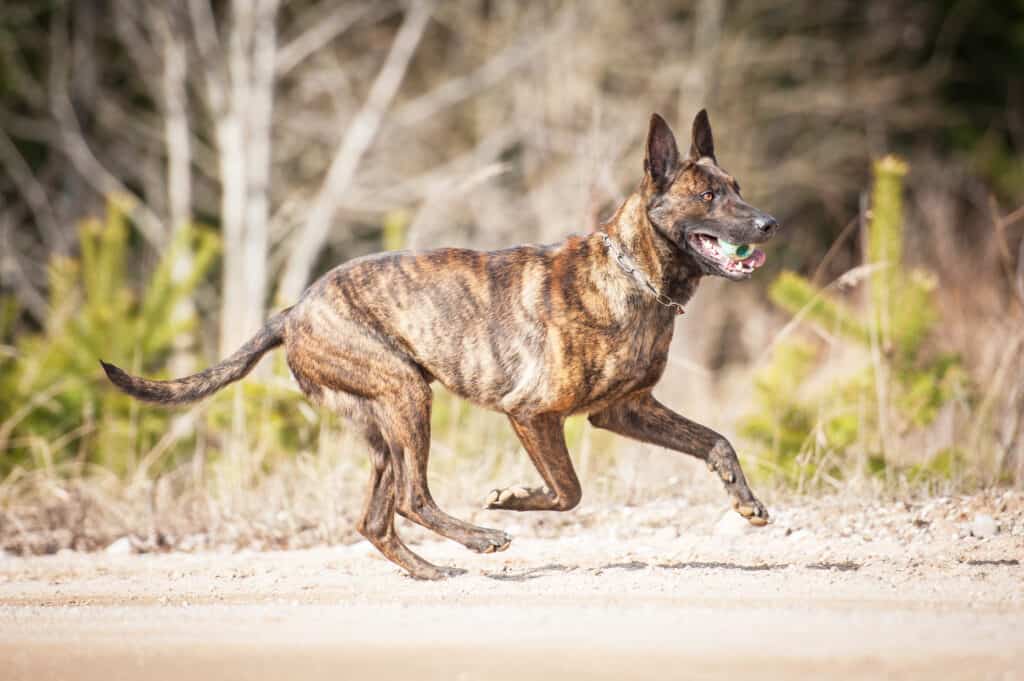
Dutch Shepherds grow to be relatively large dogs.
©Rita_Kochmarjova/Shutterstock.com
While not as massive as a lumbering Saint Bernard behemoth, Dutch Shepherds are still relatively large dogs. As adults, these fur missiles stand between 21.5 and 24.5 inches tall. That may not seem like much, but males can typically weigh between 55 and 70 pounds, with females coming in around 45-60 pounds. That’s still a lot of weight at the end of the leash!
When Should My Dutch Shepherd Be Spayed or Neutered?

Your vet will be an invaluable resource in determining when you should have your Dutch Shepherd spayed or neutered.
©iStock.com/Tamara Harding
As your Dutch Shepherd puppy continues to grow, it’ll be important to decide when the best time is to get your pooch spayed or neutered. The first person to speak with regarding this topic is your breeder. As someone who is knowledgeable in raising Dutch Shepherds specifically, as well as the health of their bloodlines, I believe they are a valuable resource.
Next, take this feedback and have a discussion with your veterinarian. They should be able to suggest the best time to have your puppy fixed. Some vets may suggest altering your dog as early as nine months due to the puppy’s ability to recover more quickly and prevent any possible unwanted litter. Others may suggest waiting due to the dog’s size, growth plates, and sexual maturity. While it isn’t always a simple, concrete answer, many larger-breed dogs fully mature sexually around 16-18 months of age.
When Should My Dutch Shepherd Start Potty Training?
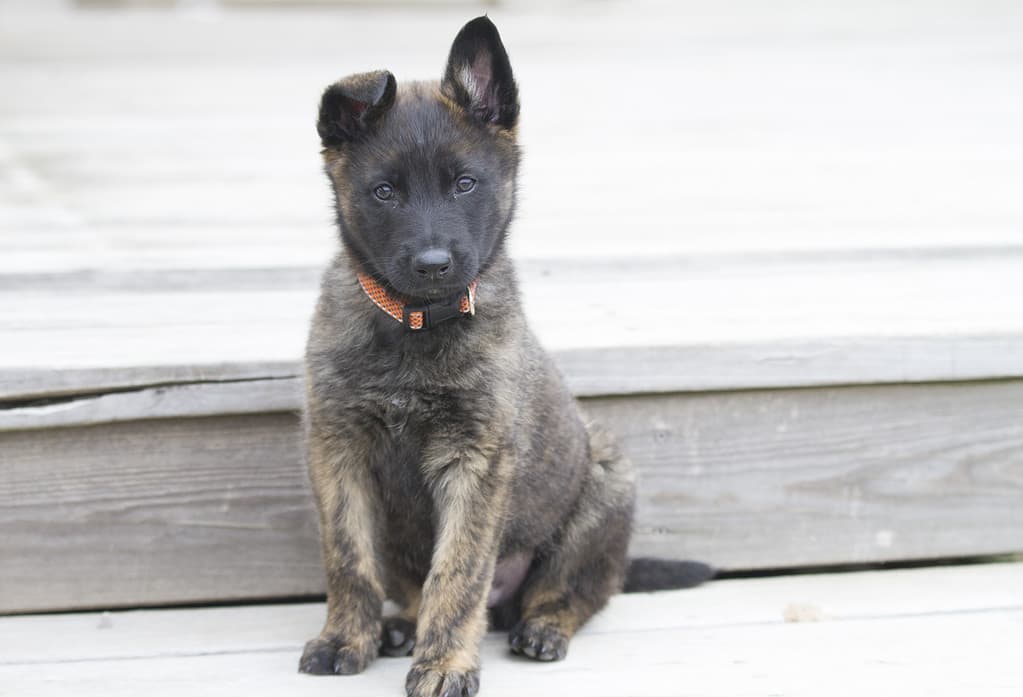
Dutch Shepherd puppies can start working on house training as soon as you bring them home.
©Tamara Harding/iStock via Getty Images
You can begin potty training your new Dutch Shepherd puppy as soon as you bring them home. Because they are extremely intelligent dogs, it is likely that they will start to pick up on housebreaking rather quickly. On average, most dogs are fully housebroken by the time they reach four-to-six months of age. However, every puppy is different and could learn the basics much more quickly or require more time. Either way, it’s important to be patient and understanding with your new furry family member.
When Should My Dutch Shepherd Stop Eating Puppy Food?

Consider offering your Dutch Shepherd a puzzle feeder or slow feeder to make mealtime more challenging.
©kerozkeroz/Shutterstock.com
Deciding when to transition puppies to adult food can sometimes feel like a riddle. Both your breeder and your veterinarian should be able to make excellent recommendations regarding the best time and how to make this transition specifically for your pup. However, the general timeline for switching large-breed dogs to adult food is around the 12-16-month period.
When Will My Dutch Shepherd Start Losing Teeth?
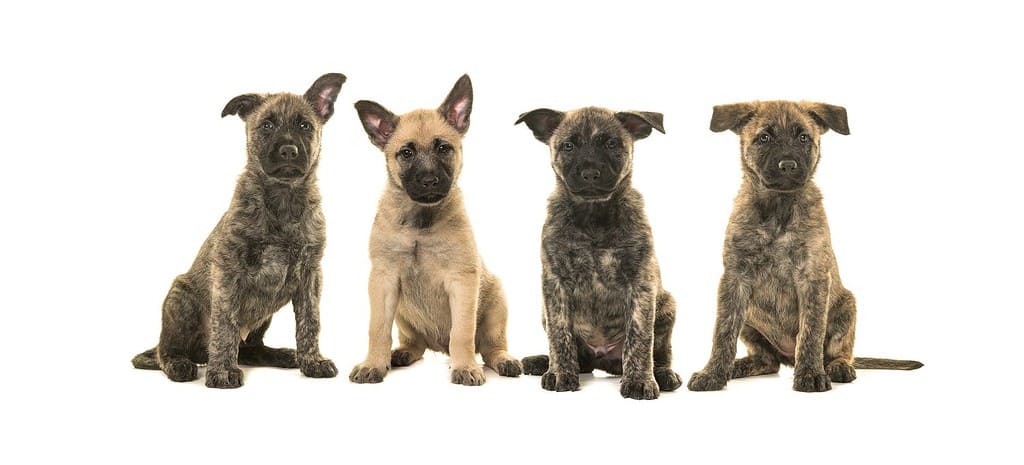
Give your puppy plenty of safe toys to chew once they start teething to prevent them from chewing your prized possessions.
©MirasWonderland/Shutterstock.com
Puppies will begin losing their baby teeth when they are about 12 to 16 weeks old. While they are teething, they will seek out items to chew regularly. Provide your new pooch with plenty of safe chews to assist them with the teething process so they don’t instead decide to use your shoes or other items around the house. Once your Dutch Shepherd is six months old, they should have lost all puppy teeth and have a full set of adult teeth.
When Should I Start Training My Dutch Shepherd?

Dutch Shepherds are furry Einsteins who thrive in training.
©cynoclub/iStock via Getty Images
Because Dutch Shepherds are extremely intelligent and driven, it is crucial to start working with your puppy as soon as you welcome them home. First, start with simple commands and keep your training sessions short and sweet. By doing so, you’re teaching your new Dutch Shepherd that working with you is a fun and rewarding exercise. Additionally, dogs undergo the most crucial period of cognitive development when they are three-to-14 weeks old. That means you should be safely and calmly introducing your pooch to as many new environments, noises, and experiences as possible. A well-socialized puppy is more likely to grow into a confident and curious adult dog.
What Commands Should I Teach My Dutch Shepherd First?

Start training with your Dutch Shepherd puppy as soon as you can.
©Tamara Harding/iStock via Getty Images
Once you welcome your new Dutch Shepherd home, there are a variety of simple commands you can start teaching. First, make sure your new puppy is learning their name and giving you their undivided attention when you call it. You can also combine name training with introducing a recall command, like “come.”
Next, start slowly introducing your pooch to walking nicely on a leash with a command such as “heel.” Basic commands, including “sit” and “down,” are also important to learn and will lead to more advanced exercises such as “stay” and “place” later.
In addition to these basic commands, you can start focusing on house training and crate training right away. Lastly, make sure to help your puppy become accustomed to being touched all over by several people. This will help make them more comfortable for future grooming and vet visits.
Other Dog Breeds Similar to the Dutch Shepherd
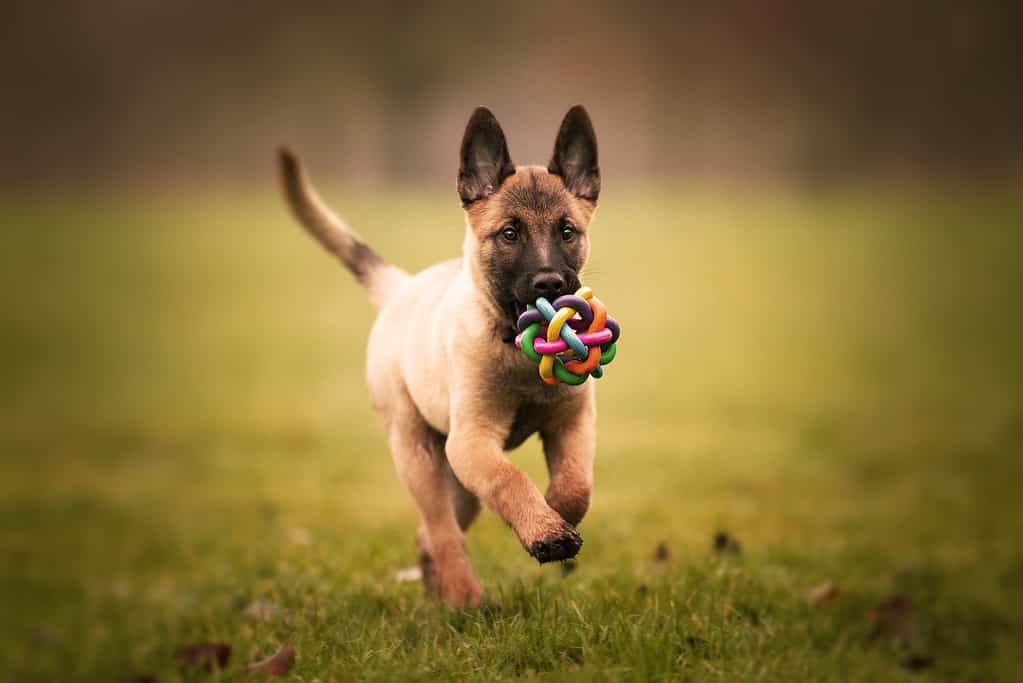
Dutch Shepherds and Belgian Malinois are commonly confused for one another.
©Wirestock/ via Getty Images
While Dutch Shepherds are a clever, beautiful, and unique breed, these dogs can be commonly confused with a handful of others. Some other herding breeds with a similar appearance include the German Shepherd, Belgian Malinois, Belgian Tervuren, and Belgian Sheepdog. Additionally, a few more rare breeds that have a somewhat similar appearance are the King Shepherd and Shiloh Shepherd. However, these two breeds are not recognized by the AKC at this time.
The photo featured at the top of this post is © Rita_Kochmarjova/Shutterstock.com
Ready to discover the top 10 cutest dog breeds in the entire world?
How about the fastest dogs, the largest dogs and those that are -- quite frankly -- just the kindest dogs on the planet? Each day, AZ Animals sends out lists just like this to our thousands of email subscribers. And the best part? It's FREE. Join today by entering your email below.
Thank you for reading! Have some feedback for us? Contact the AZ Animals editorial team.







